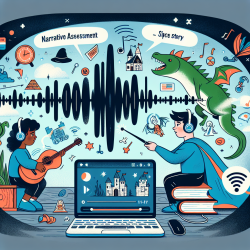Introduction
In the world of online therapy, particularly for children, creating the right environment for learning and development is crucial. At TinyEYE, we are committed to ensuring that our services not only reach as many children as possible but also provide them with the best outcomes. A recent study, "The Boomerang Effect of Zero Pricing: When and Why a Zero Price is Less Effective than a Low Price for Enhancing Consumer Demand," sheds light on how pricing strategies can significantly impact consumer demand, offering valuable insights for practitioners in the field of online therapy.
Understanding the Boomerang Effect
The research highlights a fascinating phenomenon known as the "boomerang effect," where offering a service for free (zero pricing) can sometimes decrease demand compared to a low, nonzero price. This counterintuitive outcome occurs when the offer comes with high incidental costs, such as time or effort, which consumers scrutinize more closely when the price is zero. The study suggests that while zero pricing can evoke positive emotions, it also leads to increased cognitive scrutiny of these incidental costs, potentially decreasing demand when these costs are perceived as high.
Implications for Online Therapy
For practitioners in online therapy, understanding the nuances of pricing strategies can be pivotal. Here are some key takeaways from the research that can be applied to enhance service delivery:
- Evaluate Incidental Costs: Consider the non-monetary costs associated with your services, such as the time required for parents to set up technology or the effort needed to engage children in virtual sessions. Minimizing these costs can make zero pricing more effective.
- Strategic Pricing: Use low, nonzero pricing strategically when incidental costs are unavoidable. This approach can maintain demand by reducing cognitive scrutiny while still offering a perceived value.
- Consumer Segmentation: Tailor pricing strategies to different segments of your audience based on their specific incidental costs. For instance, families with limited access to technology may benefit more from low pricing, while those with easy access might respond better to zero pricing.
Encouraging Further Research
While the study provides significant insights, it also opens avenues for further exploration. Practitioners are encouraged to delve deeper into how different pricing strategies can be optimized for various segments of the population, especially in the context of online therapy for children. Understanding the psychological and practical aspects of pricing can lead to more effective service delivery and improved outcomes for children.
Conclusion
Incorporating data-driven decisions into pricing strategies is essential for maximizing the impact of online therapy services. By understanding the boomerang effect and its implications, practitioners can make informed choices that enhance consumer demand and ultimately benefit the children we serve. For those interested in exploring this topic further, the original research paper offers a comprehensive analysis and can be accessed here.










